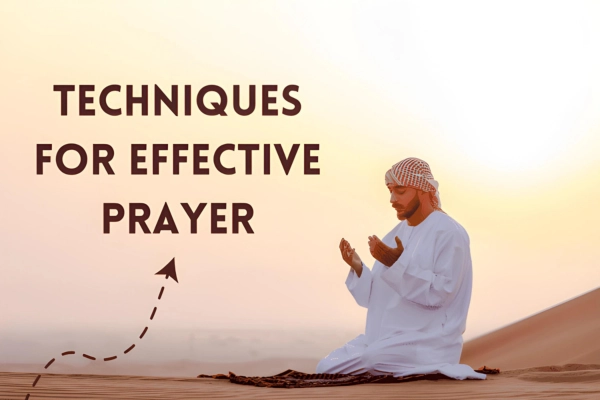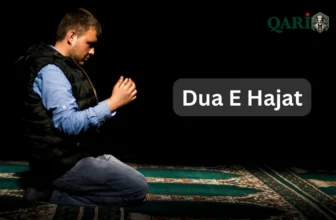
Tips and Techniques for Prayer Lessons
Understanding the Basics of Prayer
The Significance of Prayer in Various Cultures
Prayer bridges the mundane and divine, varying across cultures. Recognizing its diverse roots enriches its meaning.
Different Forms of Prayer
From silent meditation to vocal chanting, the forms of prayer are as diverse as their practitioners.
Setting the Right Environment for Prayer
A conducive environment, from a quiet home corner to a sacred space, is critical for meaningful prayer.
Techniques for Effective thoughts and prayers
Focusing the Mind
Effective prayer hinges on mental focus. Mindfulness techniques can significantly improve prayer quality.
Incorporating Meditation into daily Prayers
Meditation deepens prayer, fostering a stronger connection.
The Role of Physical Postures
Physical postures, like kneeling or sitting, influence the prayer experience physically and spiritually.


Create a Dedicated Prayer Space
Having a special place for prayer can set the right tone and mood. This could be a small corner in your room with a comfortable chair, a cushion, or even a tiny altar. This dedicated space can help you transition into a prayerful mind more easily.
Establish a Regular Prayer Schedule
Consistency is critical in building a solid prayer habit. Select particular moments during the day for prayer, like early morning, prior to eating, or just before going to sleep. This regularity helps to integrate prayer seamlessly into your daily routine.
Use Prayer Aids
Physical objects such as prayer beads, candles, or religious texts can help focus and enhance your prayer experience. These aids can provide a tangible focus for your prayers and help deepen your connection.


Journaling Alongside Prayer
A prayer journal can be a great way to reflect on your spiritual journey. Write down your thoughts, prayers, or feelings after each session. This practice can offer insights into your spiritual growth over time.
Practicing Gratitude
Start or end your prayers with a moment of gratitude. Reflecting on your gratitude can create a positive mindset and enrich your prayer experience.
Mindful Breathing
Before you begin, take a few minutes to breathe deeply and mindfully. This helps to calm your mind and prepares you for a more focused and serene prayer session.
Educate Yourself About Different Prayer Traditions
Learning about various prayer practices from different cultures and religions can broaden your perspective and inspire new approaches to your prayer life.
Group Prayer Sessions
Participating in group prayers, whether in a religious place or with a community group, can provide a sense of belonging and shared spirituality.
Personalizing Your prayers for peace
Feel free to personalize your prayers. Speak from your heart, in your own words, or even silently. Being true in your prayer is more important than the exact words you say.
Guided Prayer Sessions
For beginners or those seeking new methods, guided prayer sessions or workshops can be very helpful. These sessions, often led by experienced individuals, can provide structure and contemporary techniques for your prayer practice.
Practicing Patience and Compassion
Understand that deepening your prayer practice is a journey. Be patient with yourself and compassionate about your progress, knowing that each step, no matter how small, is significant.
Tips for Teaching Prayer to Others
Adapting to Different Learning StylesTailor teaching methods to individual learning styles for effective prayer education.
Using Stories and ParablesStories and parables effectively convey prayer’s deeper meanings.
Encouraging Consistent PracticeRegular practice solidifies prayer habits. Motivation and guidance are crucial.
Overcoming Common Challenges in Prayer
Dealing with Distractions
Distractions are common; learning to manage them is essential.
Deepening Spiritual Connection
Deepen your spiritual connection through each prayer session.
Maintaining Regularity
Implement strategies to keep up with regular prayer, even during busy times.
Advanced Techniques in Prayer
Integrating Visualization
Visualization can make prayer more engaging and profound.
The Power of Chanting and Mantras
Chanting and mantras can significantly impact prayer.
Group Prayer Dynamics
Understand the unique dynamics of group prayer compared to solo practice.
Related Posts
Conclusion
Prayer is a path of continuous growth, where the prayers of the people resonate with collective hope and faith. The provided tips and techniques for prayer lessons serve as a guide for enhancing your practice, sending prayers filled with intention and support, or aiding others on their spiritual journeys.
FAQ’s(Frequently Ask Questions)
How can I improve concentration during prayer?
Minimize external distractions by choosing a quiet, comfortable space.
Begin with brief prayer sessions and progressively extend their length over time.
Focus on your breath or a specific prayer/mantra to center your thoughts.
What are some practical ways to teach children about prayer?
Use simple, relatable language and concepts.
Incorporate engaging stories or songs related to prayer.
Encourage them to express their thoughts and feelings during prayer.
How often should one engage in prayer?
Frequency can vary; daily practice, even if brief, is beneficial.
Maintaining a regular prayer routine is more crucial than the length of each session.
Adjust frequency to fit your lifestyle and comfort.
Can prayer be effective without any religious affiliation?
Yes, prayer can be a spiritual practice independent of religious beliefs.
Focus on personal growth, gratitude, or meditation.
Prayer helps you reflect on yourself and find peace inside.
How do we integrate prayer into a busy lifestyle?
Dedicate specific times of the day for short prayers, like morning or bedtime.
Use brief moments of downtime for mini-prayer sessions.
Incorporate prayer into daily activities, like during a commute or while cooking.
Al-Fatiha (The Opening): This is the first chapter of the Quran and is recited in every unit (Rak’ah) of the Muslim prayer (Salah). It is considered the essence of the Quran and a summary of its teachings.
Ayat al-Kursi (The Throne Verse): This verse from Surah Al-Baqarah (2:255) is one of the most well-known and recited verses in the Quran. It speaks about God’s sovereignty and is believed to offer protection and blessings when recited.
The Last Two Verses of Surah Al-Baqarah: These verses (2:285-286) were revealed to the Prophet Muhammad during his journey of Isra and Mi’raj. They are cherished for their comprehensive depiction of faith and are often recited for guidance and mercy.







